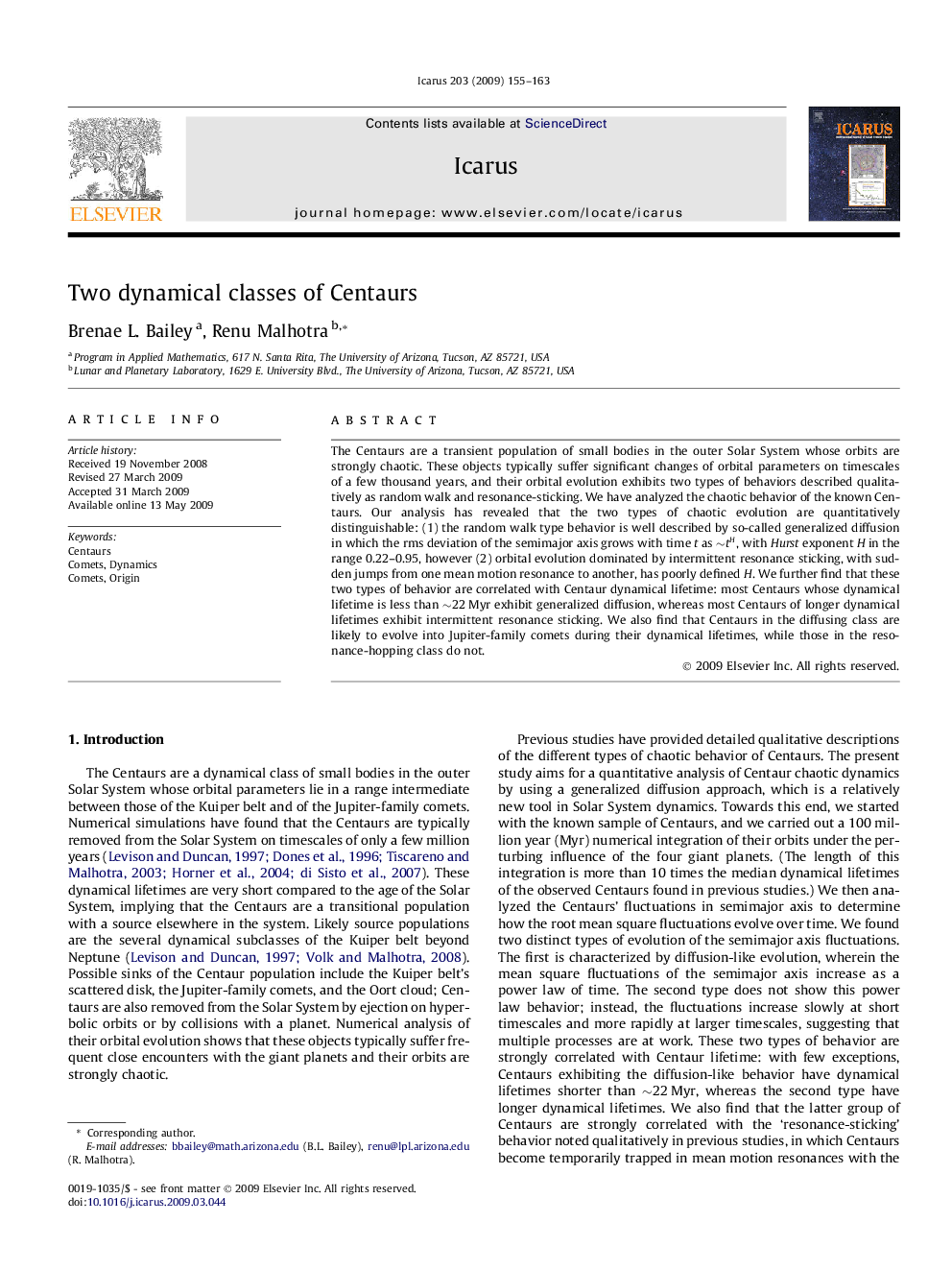| Article ID | Journal | Published Year | Pages | File Type |
|---|---|---|---|---|
| 1774554 | Icarus | 2009 | 9 Pages |
The Centaurs are a transient population of small bodies in the outer Solar System whose orbits are strongly chaotic. These objects typically suffer significant changes of orbital parameters on timescales of a few thousand years, and their orbital evolution exhibits two types of behaviors described qualitatively as random walk and resonance-sticking. We have analyzed the chaotic behavior of the known Centaurs. Our analysis has revealed that the two types of chaotic evolution are quantitatively distinguishable: (1) the random walk type behavior is well described by so-called generalized diffusion in which the rms deviation of the semimajor axis grows with time t as ∼tHtH, with Hurst exponent H in the range 0.22–0.95, however (2) orbital evolution dominated by intermittent resonance sticking, with sudden jumps from one mean motion resonance to another, has poorly defined H . We further find that these two types of behavior are correlated with Centaur dynamical lifetime: most Centaurs whose dynamical lifetime is less than ∼∼22 Myr exhibit generalized diffusion, whereas most Centaurs of longer dynamical lifetimes exhibit intermittent resonance sticking. We also find that Centaurs in the diffusing class are likely to evolve into Jupiter-family comets during their dynamical lifetimes, while those in the resonance-hopping class do not.
